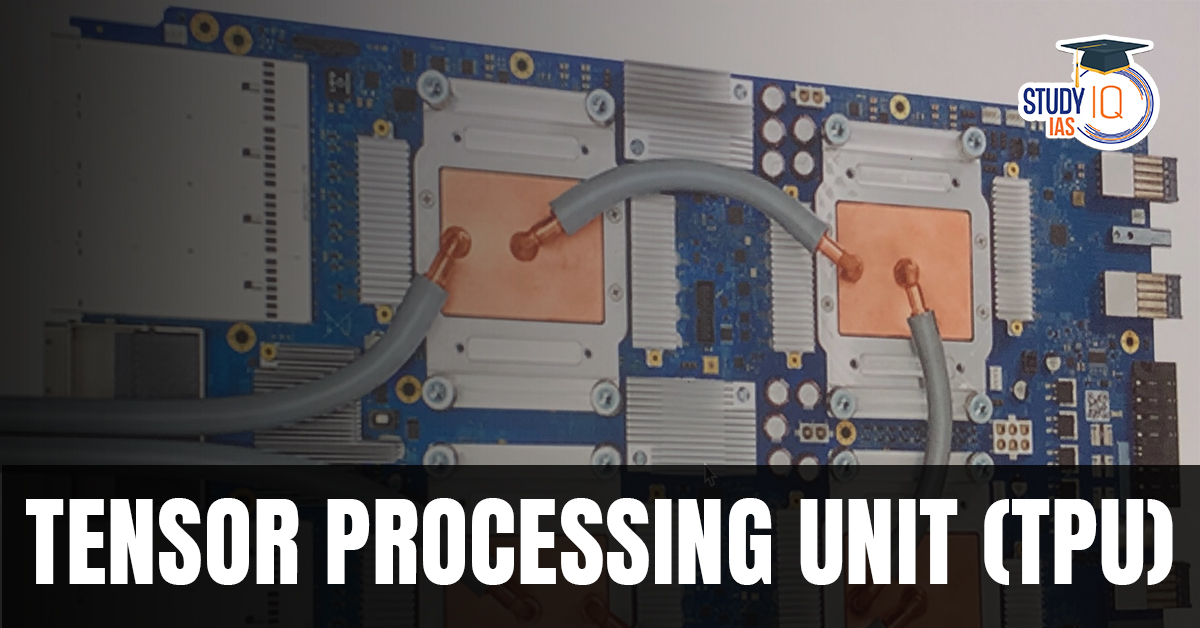Table of Contents
Context: Google has recently launched Ironwood, its seventh-generation Tensor Processing Unit (TPU).
About Tensor Processing Unit (TPU)
- Tensor Processing Unit (TPU) is an application-specific integrated circuit (ASIC) designed exclusively for accelerating machine learning (ML) tasks, like deep learning.
- They are built specifically to handle operations involving tensors (multi-dimensional arrays used in ML models).
Key Features of TPUs
- Designed for Machine Learning: Optimised for tensor operations, which are the foundation of neural networks.
- High Performance: TPUs offer significantly faster computation compared to CPUs and GPUs for ML tasks.
- Training that takes weeks on GPUs can be completed in hours using TPUs.
- Parallelism: Like GPUs, TPUs also use parallel processing, but are even more specialized. They can handle millions of tensor operations simultaneously.
- Energy Efficiency: More energy-efficient than GPUs and CPUs when running AI workloads.
Key Differences Between CPU, GPU and TPU
| Feature | Centra Processing Unit | Graphic Processing Unit | Tensor Processing Unit |
| Purpose | General Computing | Graphics & parallel computing | AI & ML-specific tasks |
| Processing Type | Sequential | Parallel | Tensor-based, parallel |
| Efficiency in AI | Low | High | Very High |


 Amazon’s Project Kuiper Gains Momentum...
Amazon’s Project Kuiper Gains Momentum...
 National Supercomputing Mission (NSM)
National Supercomputing Mission (NSM)
 SIPRI Report on Global Arms Spending and...
SIPRI Report on Global Arms Spending and...





















